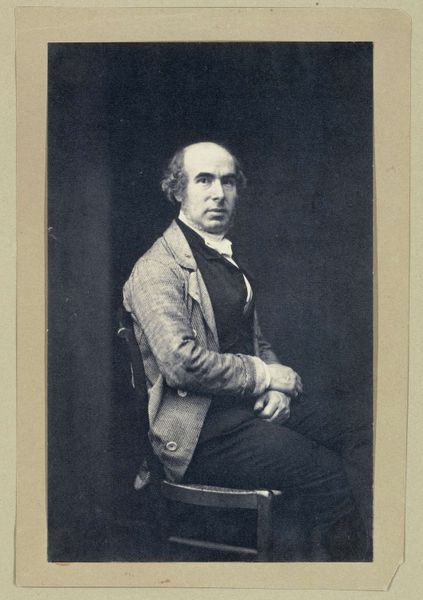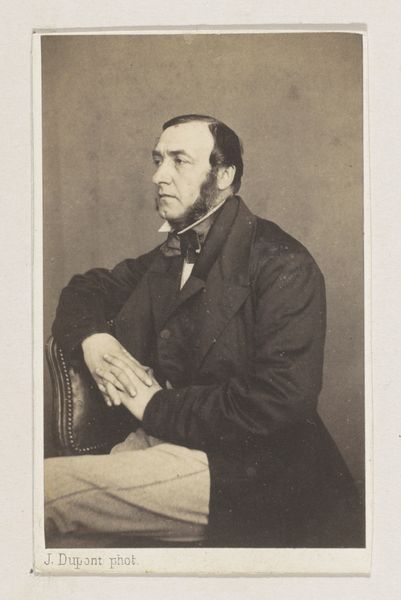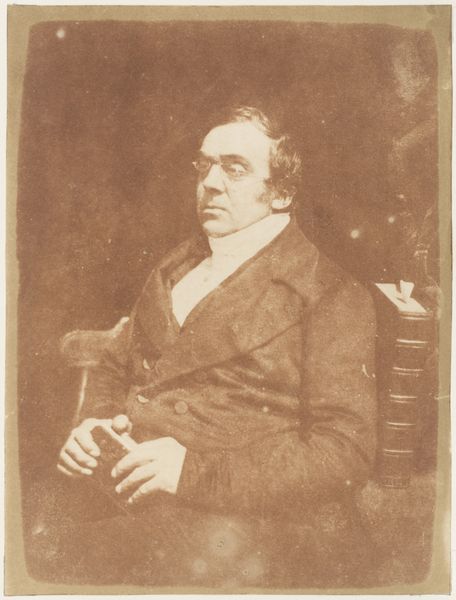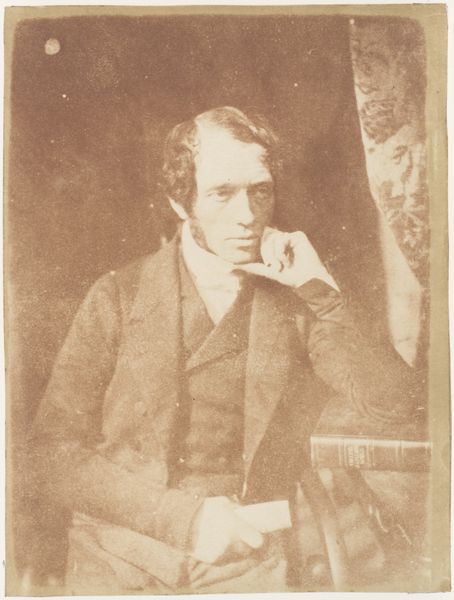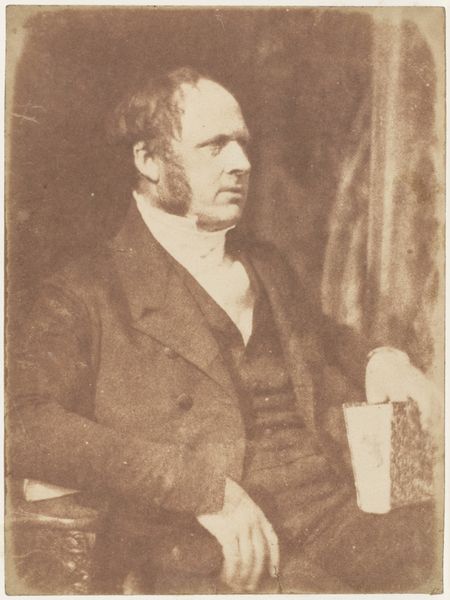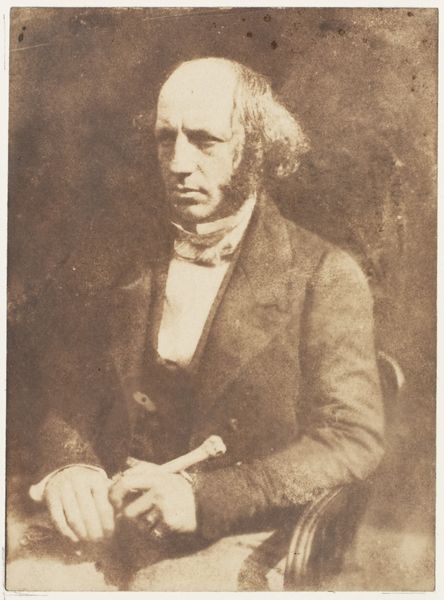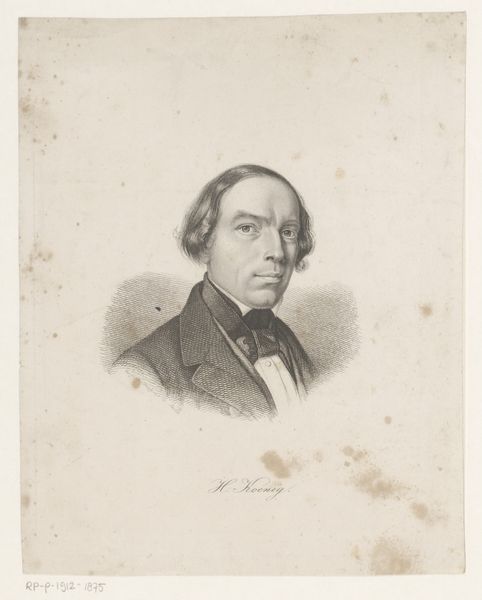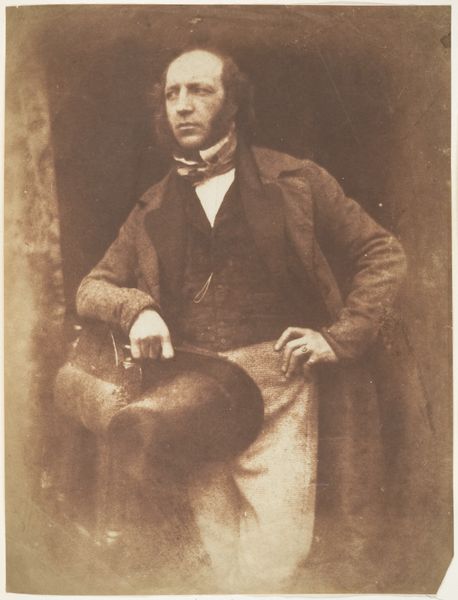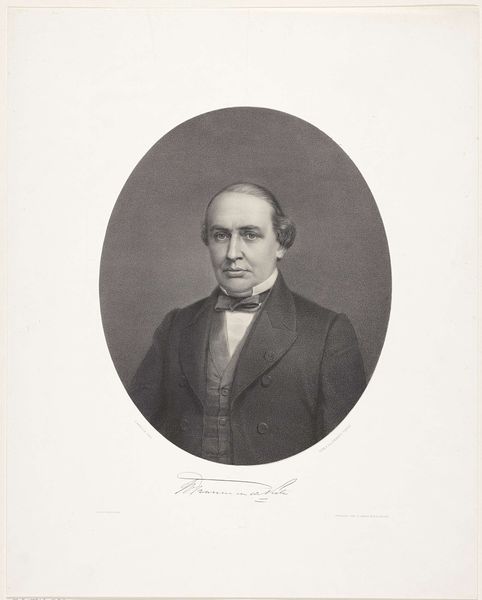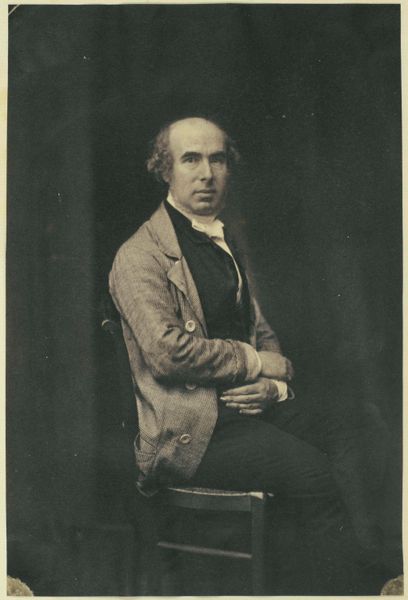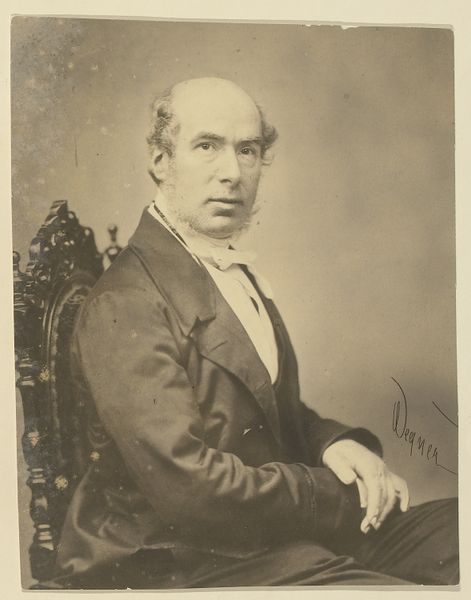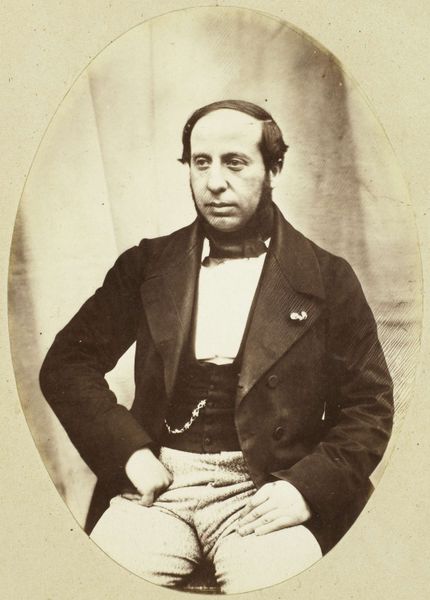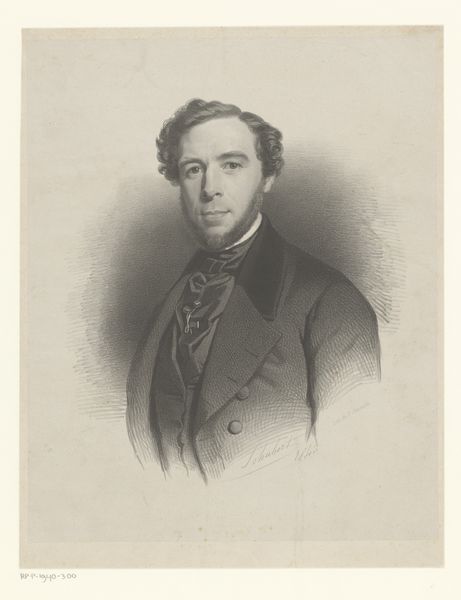
daguerreotype, photography
#
portrait
#
daguerreotype
#
photography
#
historical photography
#
portrait reference
#
romanticism
#
men
#
realism
Copyright: Public Domain
This calotype was made in Scotland between 1843 and 1848 by pioneering photographers David Hill and Robert Adamson. It portrays the Reverend George Lewis of Dundee. The soft focus of the calotype process lends the portrait a certain gravitas fitting of a clergyman. Photography in this period was rapidly developing and democratizing the practice of portraiture. Before this, only the wealthy could afford to have their likeness captured in paint, but photography allowed people of a broader range of social classes to be memorialized. Lewis was a prominent figure in the Scottish Free Church movement, which split from the Church of Scotland in 1843 over issues of state control and patronage. Hill and Adamson were commissioned to document the leaders of this movement, making this portrait not just an aesthetic object but a historical document as well. Art historians would cross-reference images like these with church records and social histories to shed light on the religious and political landscape of 19th-century Scotland. Only by considering such institutional histories can we start to see how this image participates in the wider social and cultural context.
Comments
No comments
Be the first to comment and join the conversation on the ultimate creative platform.
